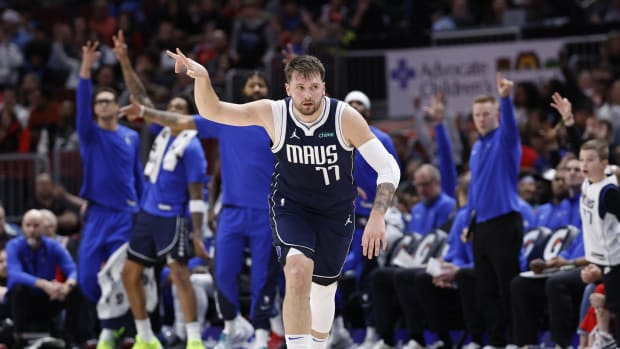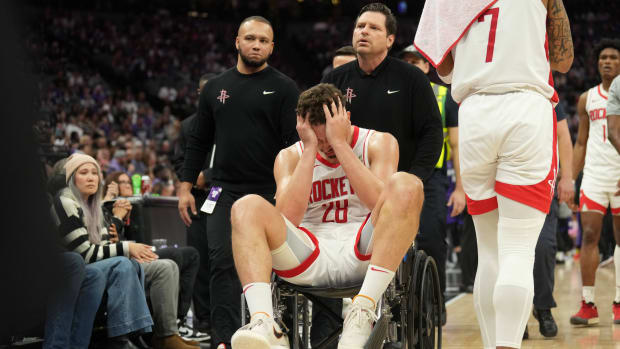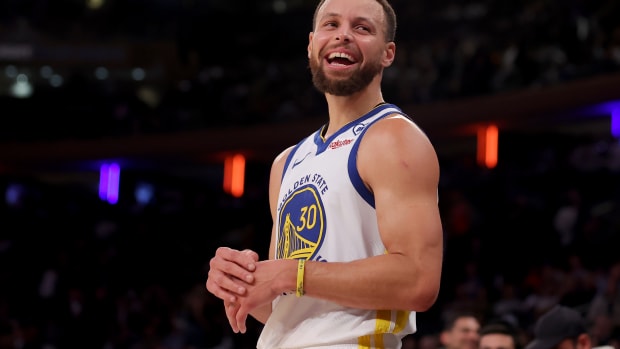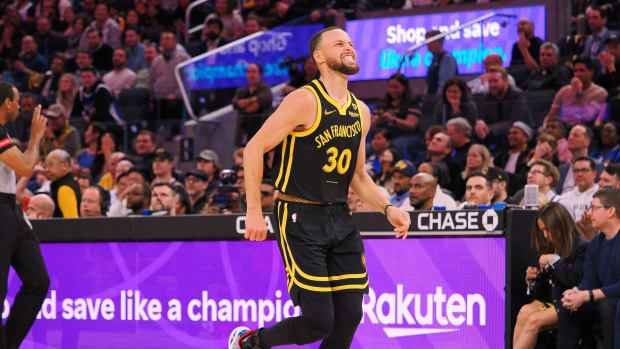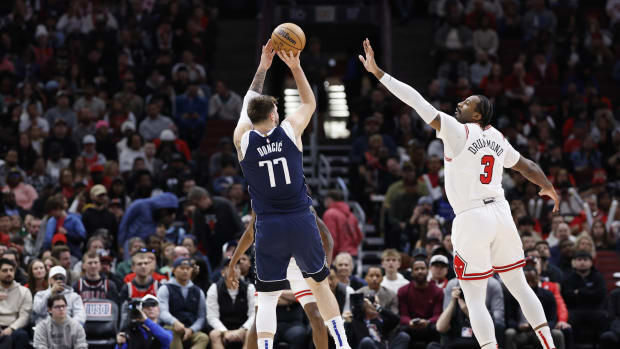Coach Kidd's Mavs' Mid-Range Shooting Plan Fails in Loss to Hawks
DALLAS — To shoot the mid-range or to not shoot the mid-range? Recent comments from Dallas Mavericks coach Jason Kidd have brought the team's perimeter shooting frequency into focus.
On a recent appearance on the "Take Dat Wit You" podcast hosted by Mark Followill and Brian Dameris, Mavericks coach Jason Kidd briefly discussed the team's view of perimeter shooting balance.
"I know everybody cringes on the mid-range, but when you look at the teams who were just in the Finals, mid-range was big," Kidd said.
The plan sounded good ... until Thursday's NBA season-opening loss at Atlanta, a 113-87 blowout in which the mid-range game failed - like most of everything else Dallas tried.
Said Kidd in the postgame: “I thought guys got great looks. They just didn’t go in for us.”
Dallas was 31-of-93 shooting, an awful 33 percent. It didn't matter from where.
And Luka Doncic? His 6 of 17 says it all.
(During this 4-0 preseason, the Mavericks posted a 33.7-percent three-point rate — down by roughly 9.9-percent from the 43.6-percent mark the team posted during the 2020-21 NBA campaign.
To put the Mavericks' perimeter shooting rate into perspective, Dallas posted by far the greatest negative change in three-point rate from the 2020-21 regular season to the 2021-22 preseason compared to the rest of the NBA.
The debate about the mid-range shot has become one fixated on straw-man arguments. There is nothing wrong with an initiator who is relied upon as a shot creator to take open mid-range pull-ups — think Chris Paul countering a deep drop when running a high ball screen.
Where issues lie is when a spot-up shooter is standing from 18 feet as opposed to fully spacing from behind the three-point line, or a pick-and-pop is taking place near the high school top of the key. Doing so effectively creates a situation where a mathematical disadvantage is unnecessarily being accepted.
It remains to be seen how Jason Kidd will end up deploying the Mavericks' half-court offense. Regardless, Dallas posted a half-court output of 1.011 points per possession during the preseason — trailing only the New York Knicks.
Perhaps most interesting of all is that Dallas actually posted the fourth-lowest rate of mid-range (17" to <3 point line) attempts at 7.8 percent in the preseason. However, the rate of their jump shots that came from the perimeter ranked 20th.
Where the Mavericks took a greater rate of their shot attempts was from short-range (within 17-feet) as the 21.7-percent frequency the team posted in preseason trailed only the San Antonio Spurs (23.1-percent) and LA Clippers (21.9-percent).
The key distinction here is that not every jump shot taken inside the three-point arc is from "mid-range" given there are different classifications from outside and inside 17-feet for two-point jump shots.
Dallas' overall scoring efficiency in the preseason was undoubtedly pushed forward by its output of 1.372 points per possession (1st) on finishes around the rim within the half-court and 1.217 points per possession (3rd) on post-ups.
The fact still remains, the Mavericks are a team built around perimeter spacing around an elite creator in Luka Doncic — naturally, resulting in a high rate of three-point attempts.
“I don’t want anybody to panic that we’re not going to shoot threes,” Kidd said during the preseason. “We’re going to shoot threes. But when you look at the way KP (Kristaps Porzingis) is playing inside and out, it’s a plus for us.
The deeper part of the Mavericks' depth chart is not necessarily a cast of players that are capable of perimeter shot creation — for themselves off the dribble or creating kick-outs for teammates. With starters not playing heavy minutes, a lowered three-point rate is the result.
“And the rotations. Guys have only played a half," Kidd said. "As we go forward, I think you’ll see more threes go up, but still being consistent in trying to get the ball inside first trying to take the easy two or get to the free-throw line.”
It's far too early to hit the proverbial panic button when it comes to the Dallas Mavericks. But for one night? A seemingly smart plan ... didn't look very smart.
